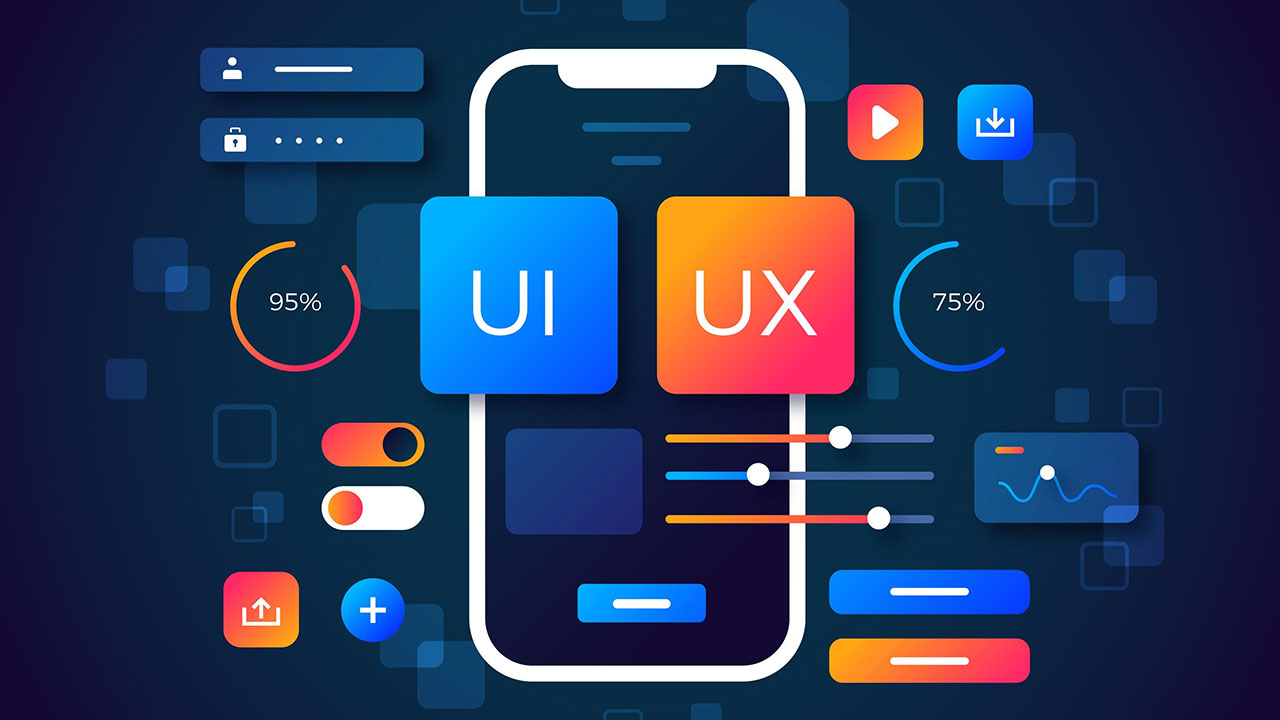In the competitive digital ecosystem, User Interface (UI) and User Experience (UX) are frequently mentioned, yet rarely understood as separate, powerhouse forces. As leaders who both tutor and deliver high-impact UI/UX design services, we recognize that conflating these terms leads to incomplete products and missed business goals
UX is the architectural plan; UI is the aesthetic execution. When harmonized by experts, they function as a single, powerful system. This article breaks down the essential differences between UI and UX and explains why mastering both is non-negotiable for anyone looking to create successful digital solutions.
UX: The Science of Strategy and Flow
User Experience (UX) is the strategic, non-visual backbone of every digital product. It's an internal discipline concerned with the logic and flow of the user's journey. Think of UX as the invisible framework that makes a product easy, efficient, and satisfying to use.
Key Components of UX Design:
- User Research: This is where we create a foundation of data by investigating user needs, motivations, and pain points through interviews, surveys, and usability tests.
- Information Architecture (IA): The art of organizing and structuring content to allow users to intuitively navigate and find what they need.
- Wireframing & Prototyping: The creation of low-fidelity structural blueprints and interactive models to test the functionality and flow before any visual design is applied.
- Usability & Accessibility: Ensuring the design meets universal standards so all users, regardless of ability or device, can complete their tasks effectively.
UI: The Art of Interaction and Visual Identity
User Interface (UI) is the presentation layer - the point where the human being and the machine connect. It is a visual discipline concerned with the sensory details that guide the user and reinforce the brand. UI is what gives the product its personality and polished feel.
Key Components of UX Design:
- Visual Design: This includes typography, color palettes, iconography, and imagery that establish a consistent and appealing brand voice.
- Interactive Elements: Designing the appearance and responsive behavior of all input components, such as buttons, menus, and forms.
- Consistency and Brand Language: Ensuring that the same elements look and act the same way across every screen, which helps to create a trustworthy and familiar user environment.
The Perfect Handshake: Why Both Disciplines Must Coexist
The true power of UI/UX design lies in their collaboration. If a product excels in one area while failing in the other, it will fail in the marketplace:
| Scenario | Outcome | Analogy |
|---|---|---|
| Great UX, Poor UI | It works perfectly but looks ancient, boring, or untrustworthy. | A powerful car engine with no bodywork. Users won't drive it. |
| Poor UX, Great UI | It looks stunning and highly polished, but it's impossible to navigate. | A beautiful, aerodynamic car body with a broken transmission. Frustration ensues. |
The ultimate goal of our consulting and training is to enable our clients to create a holistic experience where the user is delighted by the visuals (UI) while completing their task with zero friction (UX). Our commitment is to create this synergy for every client project, ensuring optimal performance.
Leveraging the Distinction for Business Growth
Understanding the difference between UI and UX is not merely academic; it drives strategic business decisions. When your team knows the scope of each role, you can:
- Allocate Resources Correctly: You ensure your research dollars fund UX discovery and your graphic talent focuses on refined UI visuals.
- Reduce Development Rework: Validating the UX flow through wireframing prevents expensive visual redesigns later in the project lifecycle.
- Maximize Conversion: A dual-focused approach allows you to create products that not only attract new users with compelling visuals but retain them with flawless utility.
The ROI of Harmonized Design
For business owners and executives, this distinction translates directly into profitability. When design is approached strategically, you gain several measurable advantages:
- Lower Support Costs: A truly intuitive UX reduces user frustration, leading to fewer help requests, technical support calls, and how-to questions. This allows your customer support teams to focus on high-value issues, significantly lowering operational expenses.
- Increased User Retention (Stickiness): Users stick with products that are easy to use and a pleasure to look at. A great UI creates the initial appeal, but a flawless UX creates the long-term habit. This high retention rate is the cornerstone of sustainable growth.
- Faster Feature Adoption: When new features are introduced with clear visual cues (UI) and logical placement within the user journey (UX), users find and use them immediately, speeding up your return on investment for new development.
- Stronger Brand Loyalty: Every positive interaction is a chance to build trust. When users consistently encounter products that are both effective and aesthetically pleasing, it reinforces your brand as professional, competent, and user-centric.
The Gateway to Digital Leadership
The complexity of modern digital development demands a dual focus. By treating UI/UX design as two harmonized services one dedicated to research and strategy, the other to visual perfection you transform your digital presence from a mere website into a high-performance business asset. Stop relying on assumptions or aesthetics alone. Ready to transcend the basics? Our expertise, honed by tutoring and delivering the craft, ensures we apply proven, research-backed methodologies to every client project. We don't just follow design trends; we apply the foundational principles of user psychology and visual design to create digital solutions that perform, reduce costs, and build lasting user loyalty. Partner with us to define your digital strategy and create a product that leads your industry.




